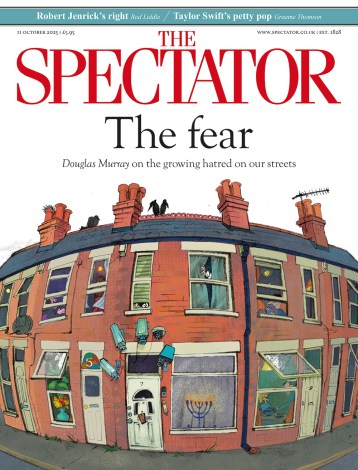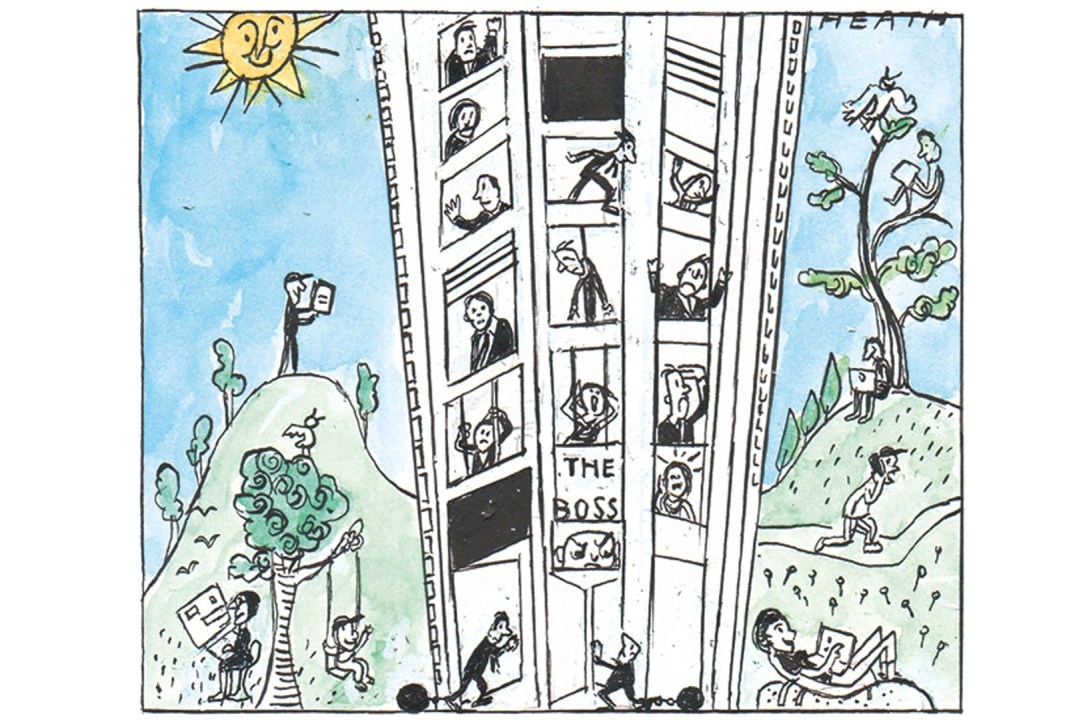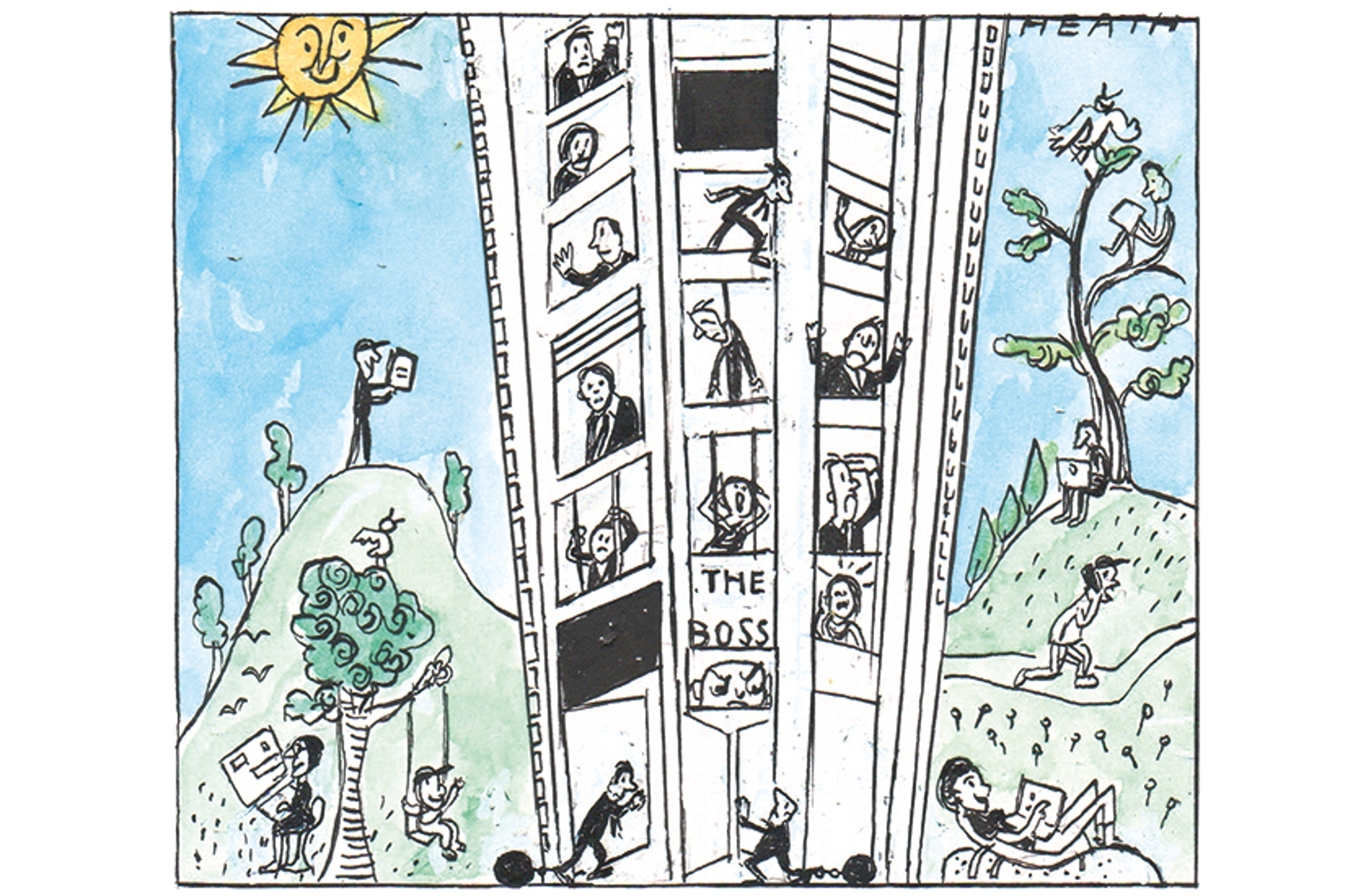To what extent do workers want to return to the office? It’s a question on everyone’s mind – none more so than Rishi Sunak. If Covid working habits stick post-lockdown, with a majority of people continuing to work from their living room, it’s not just the working day that will be fundamentally altered, but the wider economy too. The economic implications for the shops and services designed to cater to the office worker will be drastic: large parts of city centres and high streets may find themselves without customers, or enough business to turn a profit.
But these were not the main points the Chancellor made in his interview with the Daily Telegraph and the Sun, as part of a Conservative fringe event hosted by iNHouse Communications. Instead, Sunak pointed to another group losing out from the working at home mandate: young and inexperienced workers, who are only a few steps up on the career ladder. ‘Imagine you’ve just left college or university you start this job in a big company and you’re sitting at home on your own’, he told the papers. ‘How do you get to know your peers, how do you learn the culture of an organisation, how do you get those mentors, which are important for your career development?’
Young people are cut off not just from the office, but from vital opportunities to socialise and network
It’s a point that’s been made far too infrequently during the pandemic. While polls continue to suggest employees want to retain at least some degree of flexibility to work from home, younger people’s voices have largely been absent from the debate. Often in house shares or small flats, they have been cut off not just from the office, but from vital opportunities to socialise and network early in their careers.
The Chancellor also made the case for the spontaneity and creativity that is sparked when workers are together, arguing that ‘meetings that happen by chance’ and ‘people riffing off each other’ simply can’t happen in the same way over a Zoom call. He called for workers to ‘vote with their feet’ – a nod to the very different working environments that are likely to be on offer after the pandemic. Sunak’s market-oriented philosophy comes with an understanding that the decisions companies make after lockdown – work premises included – need to be organic. Regardless of his own preferences, it is not his job or the job of the state to determine how businesses operate. His remarks feed into the idea that for some workers the ability to stay at home might be a job’s selling point; for others, it will be their ability to work with others.
Sunak’s comments suggest that when the government pushes people to head back into the office, the campaign won’t simply be focused on getting customers back into their normal routines and spending habits, it will also highlight the benefits of being in an office, which millions of people have missed out on over the past year. But as for when that push comes, we are still in the dark.
The working from home guidance is set to be part of the government’s review on social distancing, which as Katy Balls says on Coffee House could make or break just how ‘free’ the public are to return to normal on 21 June. It’s thought that changes to the work guidance may come towards the end of the roadmap, as officials prioritise their R-rate capital on opening other parts of society, risking an increase in infection rates so shops and hospitality can open, rather than encouraging people back onto public transport and into office spaces.
But as last summer showed, it’s near impossible for many of these hospitality and retail businesses to operate normally, without office workers as customers. So far, the combination of the furlough scheme and business’s fast adaptation to lockdown restrictions has kept unemployment relatively low in Britain compared to the rest of Europe. It’s the Chancellor’s priority to try and kickstart the economy as soon as possible, in the hope that more job opportunities can be made available before furlough comes to an end, and the headline unemployment rate stays towards the lower end of forecasts. But with the government taking an extremely cautious path out of lockdown, the extent to which working habits have shifted isn’t likely to be discovered for at least several months.








Comments